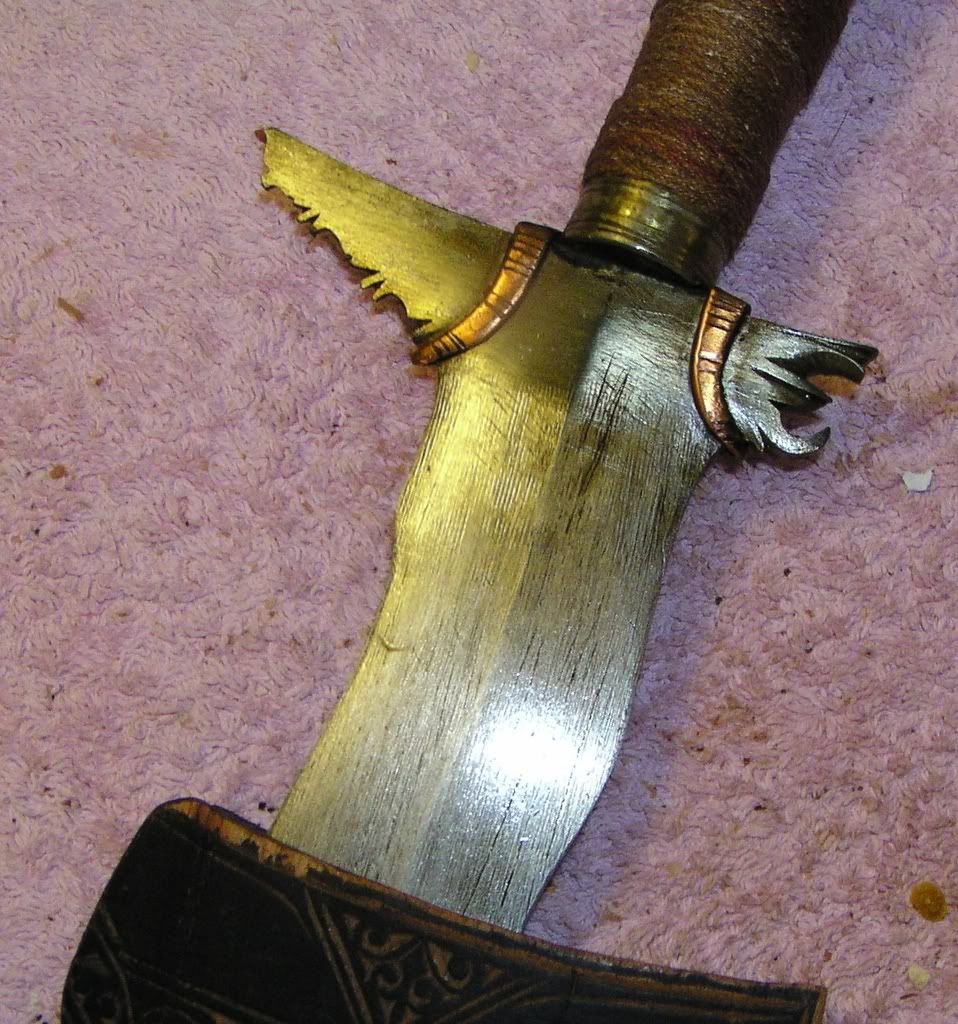
 |
|
|
|
|
#1 |
|
Member
Join Date: Mar 2005
Posts: 599
|
Hi Battara,
Well, that certainly shoots that theory all to heck. I made an assumption based on an incorrect interpretation of the replies and you know what happens when you assume instead of observing and considering carefully. Sincerely, RobT |
|
|

|
|
|
#2 |
|
EAAF Staff
Join Date: Dec 2004
Location: Louisville, KY
Posts: 7,363
|
That's ok - I have often made an asset of my self many, many times.
 Actually Robert it was not a bad idea..... |
|
|

|
|
|
#3 |
|
Member
Join Date: Mar 2006
Location: Room 101, Glos. UK
Posts: 4,268
|
one last question i have needs ellucidation.
when reading frederico's excellent info linked to on the reference site, i noted that during construction the kris blade would be descaled and shaped using a draw knife, with more recent ones being filed. how does one tell? my kris has a series of fine straight parallel grooves running longitudinally along the blade with no sign of what i would consider filing marks perpendicular to the edge, in fact i do not see any sign that the edge was ground to sharpen it other than a very fine polished edge bevel of maybe a millimeter & the lines are constant and parallel to the longitudinal axis right to the edge (there is some variation near the luks). i see no signs that a stone or grinder has ever been anywhere near this blade, no random marks as i'd expect from stoning or sanding/grinding. it certainly looks to my mechanical engineers eyes like it was scraped with a tool lengthwise rather than filed. the lines over most of the blade are very fine, but near the hilt are a bit more distinct. across the gangya itself they ARE perpendicular & across the blade from the ends of the baca-baca to the hilt. is this filed or drawn? what dates were the transition to filing or is that too broad? |
|
|

|
|
|
#4 |
|
EAAF Staff
Join Date: Dec 2004
Location: Louisville, KY
Posts: 7,363
|
Would you please post pictures - this would help tremendously.
|
|
|

|
|
|
#5 |
|
Member
Join Date: Mar 2006
Location: Room 101, Glos. UK
Posts: 4,268
|
OK, you can see the striations in this shot
 you can kind of see them in the earlier photos, but i've set the lighting on this one to exaggerate them a bit . |
|
|

|
|
|
#6 |
|
Member
Join Date: Apr 2005
Posts: 3,255
|
Hm, I'm not sure what caused these but IMHO it screams power tools (seems like this was done after the hilt and clamps were already fitted - maybe just a really bad cleaning/polishing job?). It certainly isn't something I've ever seen with an antique Moro kris.
Your blade has been grinded into shape (luk and gangya features formed by stock removal). In the traditional approach a blade would be forged into shape and would only need minor work to remove scale and to smooth the surface. Detailed work at the base of the blade would be done by specialized tools (including small files, I suppose) and then the blade would be ready for the final polishing steps. Regards, Kai |
|
|

|
|
|
#7 |
|
EAAF Staff
Join Date: Dec 2004
Location: Louisville, KY
Posts: 7,363
|
I'm with Kai on this one. You see more of this on mid - present made pieces.
|
|
|

|
 |
|
|